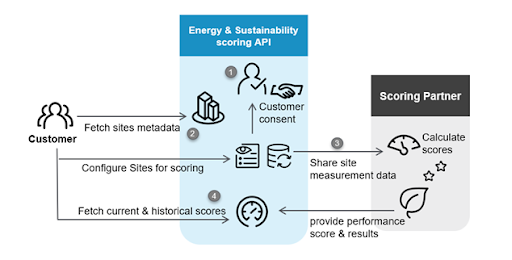SPONSORED BY SCHNEIDER ELECTRIC
Most businesses want to operate at scale. Making scale work while continuing to drive efficiency within buildings requires keeping variable costs under control—heating, cooling, and other energy strains. For that, you need data from energy and temperature sensors.
The data that these sensors produce is incredibly valuable, but the sheer amount of data generated can become difficult to manage and understand quickly. It can grow to unwieldy levels fast. For example, suppose that in a building there are 10 to 20 sensors per floor for 60 floors (600 - 1200 sensors) measured over 365 days. Scale that over 20, 100, even 1,000 buildings, and you can see how managing this data and making it understandable to building managers, regulators, and the finance department requires significant man hours. To understand and work with this massive quantity of real-time data efficiently, many companies turn to digital solutions.
If you’re a software engineer at one of these companies building out a digital solution, you need to be able to funnel this vast amount of data into easy-to-digest dashboards and reports. Traditionally, this means building out a data pipeline that aggregates the individual sensor readings in a data warehouse, cleaning and standardizing it in a custom ETL pipeline, and then storing it in a data lake that your dashboard software can pull from. Getting this in place means you’ve become responsible for multiple technologies (databases and data manipulation tools) as well as the infrastructure that they run on.
Digitization of connected devices has not only made plenty of buildings more sustainable and efficient but has also helped boost business operational efficiency. At Schneider Electric, we think if we can make this operational data easier to manage and easier to access through simple, standardized APIs, everyone can transform their companies into sustainable data-driven organizations. Our Schneider Electric Exchange platform does the hard work for you, and our open APIs built on top of our EcoStruxure software can export the data to where you need it.
In this article, I’ll cover the ways that simple API access to your data can help you and your partners create better software solutions.
Marrying traceability and sustainability through data
The battle against climate change and towards a more sustainable world will be won with data. Schneider Electric has primarily been a hardware company, but all that hardware creates a goldmine of data. We’ve been working with data scientists all over the globe to best turn what we know about sustainability and energy into productized APIs that anyone can use to turn their data into easy insights.
Data comes from a lot of different sources, so it’s imperative for us to support all those sources. That includes non-Schneider sensors. We can ingest data through other protocols, whether that’s MQTT or any type of heterogeneous protocol. While we try to use existing protocols and formats, one size does not fit all—we discovered that sometimes we need to create a custom data pipeline. Each business has its own requirements, so we keep enriching use cases. We cannot do this alone; we leverage partner expertise in each industry. Businesses need reliable and detailed data, so we provide easy access to our IoT infrastructure with millions of data points for a single building. We strive to be more and more open, welcoming more and more developers into our IoT world by building digital interfaces in our Exchange developer portal that takes away the complexity of IoT infrastructures.
Any Schneider hardware or software installed on the field is natively connected to our cloud through our intelligent edge platform and gateways. We can run analytics close to the user on the edge, or we can run analytics on our cloud, depending on the sort of speed we need.
Let’s look at a simple automation example. In an office space, unoccupied spaces might not need as much heating and cooling. Most organizations give meeting rooms their own calendars. By calling the calendar app’s API, you can see a list of meetings to be held in the room and use the EcoStruxure API to configure an efficient heating and cooling schedule that keeps the room at a comfortable temperature but only when it is occupied.
Our EcoStruxure Energy and Sustainability Scoring API is a unique interface for software developers who want to easily access the energy and sustainability performance score of sites equipped with compatible EcoStruxure systems.
import requests
site_id = "YOUR_site-id_PARAMETER"
url = "https://api.exchange.se.com/ecostruxure/user/scoring/v1/sites/" + site_id + "/scoring-requests"
headers = {"Authorization": "Bearer <YOUR_TOKEN_HERE>"}
response = requests.post(url, headers=headers)
data = response.json()
print(data)It’s not always just you that needs this information, though. You’ll want to share this data with regulators and partners, and we’re building those endpoints, too.
Proving and improving sustainability through data sharing
Achieving sustainability requires a not insignificant investment from any organization that seeks it. To claim that your organization is sustainable, you need proof, usually from a trusted auditor that follows known standards. One of the leading ones is the Leadership in Energy Efficiency Design (LEED) certification, published by the US Green Building Council. LEED is primarily a design tool, though the certification was developed to prove that buildings followed the standard. LEED is for all building types and all building phases. The LEED for Building Operations and Maintenance (O+M) specifically requires building operational data for the certification.
The certification process used to be very manual. An auditor would spend a few days collecting building data, FTP it to the US Green Building Council in the accepted format, and then wait a few more days for a response. But now the US Green Building Council is a customer of our data platform, so for any other customer of ours, certification becomes a question of consent management. Select the data to share, consent to share the data with another, and click send. We have a real estate company partner that just certified 100 buildings in three clicks. That’s the power of data sharing.

Easy access to data is very powerful, which is why we take the security and privacy of these shared APIs very seriously. With great power comes great responsibility. We design each API for a specific use case so that we provide the right amount of data. Any API meant for partners, provides a more limited data set than the data meant for the owner of the data. While a data owner may want granular data for all their building operations, the scoring partners only need data relevant to the certification. It’s the same data they would gather from onsite collection, only faster.
For all our data products, we use OAuth2 and single sign on to manage the customer access. They cannot share those credentials with partners, so we use personal access tokens (PAT) for authorization on all partner APIs, which the owner can generate. This way, if those credentials are compromised, the damage is limited to the access granted to the partner. A PAT can be revoked at any time.
These partner APIs can be used in any case where you need to provide access to partners outside of your organization. It can be another organization developing software for you, partners in your supply chain, anything you can think of.
If you can think of use cases that we haven’t, then we want to hear from you.
Shape the future of an open API community
We’ve done a great deal of work on the Exchange data platform developing analytics, creating ingestion pipelines for various data formats, and developing APIs to quickly serve insights. But we are more than open—we want more than just the data from our own devices. Our analytics can always be better, more complex, more adapted, more tweaked, and closer to reality. And our APIs are always improving.
However, we’re not in the business intelligence dashboards market, as there are plenty of good ones out there. Our APIs have been developed to serve the use cases that we’ve heard about, but we haven’t heard everything. That’s where you come in. If you need different data via APIs, let us know. We’re the EcoStruxure experts, but you know your needs and business better than we do.
The same goes for analytics. We’ve created some analytics packages that we think are very good. Our Virtual Sensor Fault Detection (VSFD) analytics uses machine learning to determine if sensors are overheating, impaired by dirt, or otherwise failing to register the correct temperature. Our Building Energy Modeling analytics creates a “thermal signature” of a building—the energy a building requires considering the external temperature—to aid in running simulations or finding ways to improve. But we know clever developers are using our data platform to create analytics we haven’t thought of, which is why we created the Exchange Marketplace.
Sustainability offers great challenges and provides opportunities for those who solve them. With Exchange, we’re trying to simplify understanding the data that you need to meet the challenge, while providing you opportunities to share (and monetize) any solutions you come up with. Digitization plus sustainability equals a new world.
